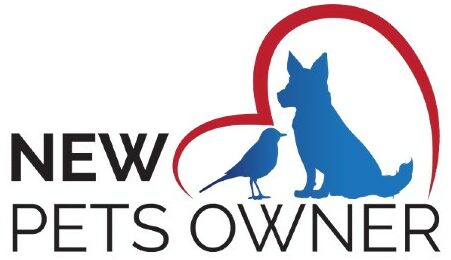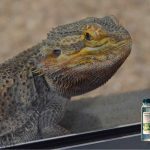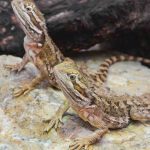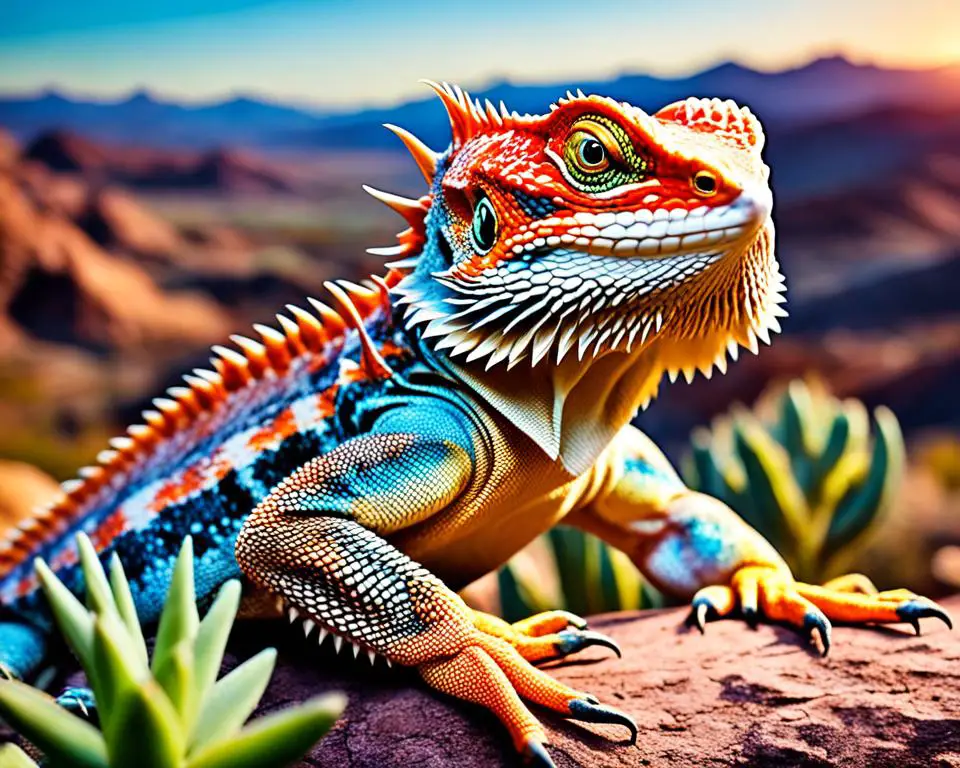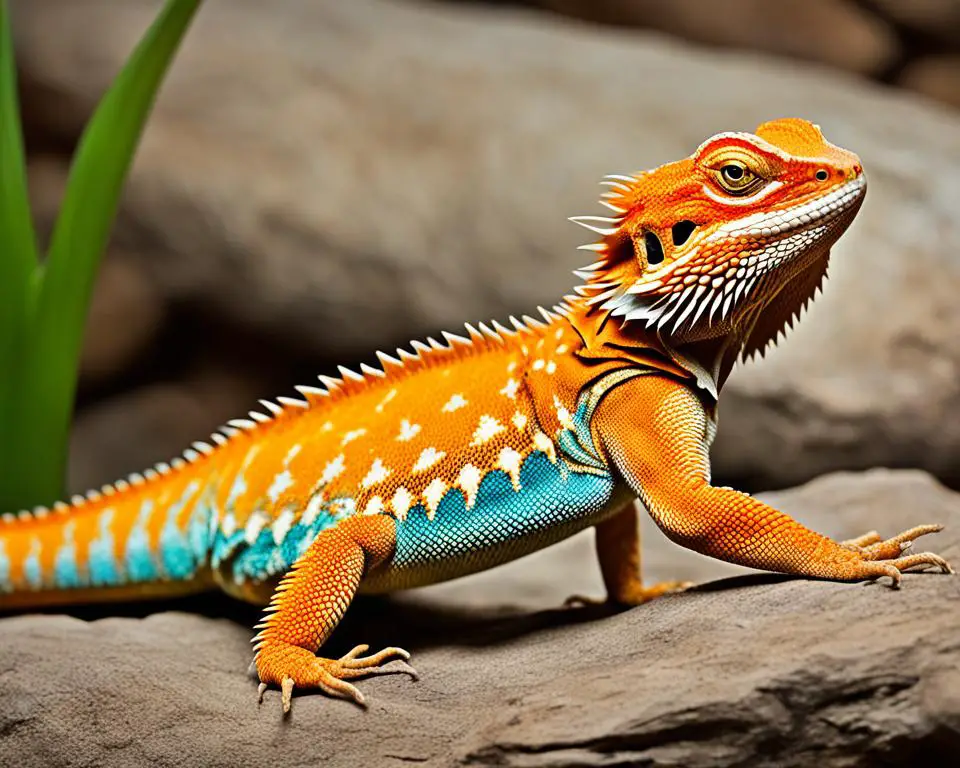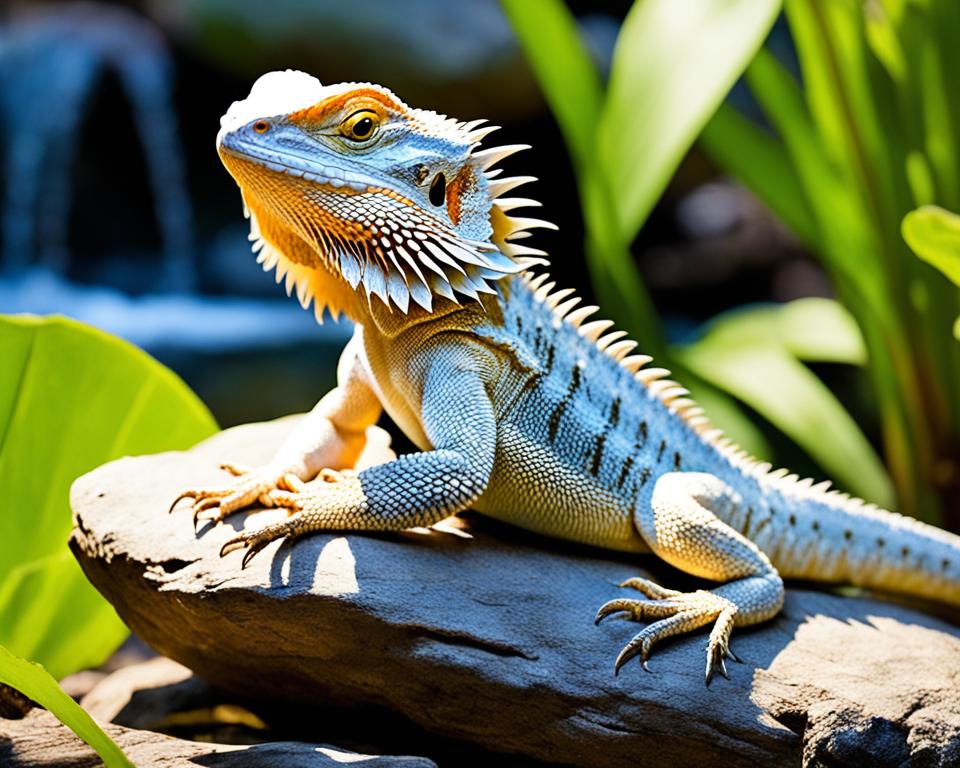Do you love bearded dragons? Are you looking for a new pet? if so, which bearded dragons should you get?
There are many species of bearded dragons. Some are very popular, while others are not. In this article, we’ll help you decide which beardie species are best suited for you.
We’ll go over seven best bearded dragon species to have as pets, including the pros and cons of each type. Then, I’ll tell you which ones are most likely to thrive in your home environment.
Let’s get started.
Do bearded dragons make good pets?
The decision to bring a bearded dragon into one’s home as a pet is a popular choice among reptile enthusiasts. Bearded dragons are known for their mild temperament, unique appearance, and relatively low maintenance requirements.
They are fascinating creatures that can provide hours of entertainment for their owners. One common question that potential bearded dragon owners often ask is, “Do bearded dragons make good pets?”
The answer to this question is a resounding yes. Bearded dragons are docile creatures that are typically easy to handle and care for.
They are known for their friendly demeanor and can form strong bonds with their human companions. In addition to their amiable nature, bearded dragons are also relatively easy to care for.
They have straightforward dietary needs, requiring a diet of insects, vegetables, and fruits. They also need a warm, spacious habitat with access to both heat and UVB lighting. With the proper care and attention, bearded dragons can live long, healthy lives in captivity.
Overall, bearded dragons make excellent pets for reptile lovers of all experience levels. Their charming personalities and striking appearance make them a popular choice for those looking to add a unique and lovable companion to their household.
7 bearded dragon species to have as pets
Before diving into the article, let’s take a quick look at the best bearded dragons to have as pets on this list:
| Name | Behavior | Size | Life Expectancy | Read Review |
| Central bearded dragon | – Territorial behavior may display aggression towards other males fighting for food and over females | 16 to 24 inches long | 10 to 15 years | Central bearded dragon Read Review |
| Rankin’s dragon | – Shy and skittish when they are young. – Multiple males in one enclosure can lead to fights | 10 to 12 inches long | 6 to 8 years | Rankin’s dragon Read Review |
| Eastern bearded dragon | – More aggressive than the central bearded dragon – Advisable to interact with only females | 20 to 24 inches long | 10 to 15 years | Eastern bearded dragon Read Review |
| Pogona nullarbor | – Can display territorial behavior – Males bite more forcefully than females | 10 to 18 inches long | 14 to 18 years | Pogona nullarbor Read Review |
| Pogona microlepidota | – When scared, wide open its mouth to make the jaw appear larger – Adults can change the color of their beard while in a defensive position to make it more striking | 4 to 6 inches long | 14 to 18 years | Pogona microlepidota Read Review |
| Pogona minor | – Can become very territorial when threatened | 14 to 15 inches long | 14 to 18 years | Pogona minor Read Review |
| Chinese water dragon | – Can show aggressive behavior by arm waving or keeping the mouth open – They communicate by puffing up their head (head bobbing) – They like digging and basking | 10 to 36 inches long | 10 to 15 years | Chinese water dragon Read Review |
1. Central bearded dragon
Central bearded dragons are the most common species of dragons kept as pets. These are also known as ‘common bearded dragons’ because they are found throughout North America.
They are easy to care for, but they do require some maintenance. They eat insects, fruit, vegetables, and other small animals that fall into their enclosures.
Pros
- Easy. Central bearded dragons are easy to care for, and they make great reptile pets for people with limited space or experience.
- Trainable. Central bearded dragons are intelligent and interactive, usually responding to their owners’ voices and movements.
Cons
- Aggressive. They can be aggressive toward other animals, and their enclosures must be kept clean to prevent disease.
- Stress. They can also become stressed from overcrowding or lack of enrichment.
- Escape artists. Central bearded dragons are very good at escaping from their enclosures, so extra security measures such as locks and clips should be
Is the Central bearded dragon an easy pet?
Yes, Central bearded dragons are easy to care for and make great reptile pets for people with limited space or experience.
They eat bugs, fruits, and vegetables. However, they can become aggressive towards other animals and stressed from overcrowding or lack of enrichment. Extra security measures such as locks and clips should be taken to prevent them from escaping.
Verdict
Overall, Central bearded dragons are an excellent choice for beginners who want to learn about reptiles. However, if you live in an area with a lot of wildlife, you may need to invest in additional security measures.
2. Rankin’s dragon
Ranking dragons are native to Australia, and they have a distinctive stripe along their back.
They are not commonly kept as pets since they are not as hardy as the central bearded dragon, but they can still make great companions for experienced reptile owners.
Pros
- Unique look. Rankin’s dragons have a unique appearance with their distinct stripe down the back, and they come in various colors and patterns.
- Low maintenance. Ranking dragons are relatively low maintenance compared to other reptiles, requiring regular feedings of insects, fruit, and vegetables.
Cons
- Aggressive. Rankin’s dragons can become aggressive if they feel threatened, so it’s important to keep them in a secure enclosure.
- Sensitive to temperature. Rankin’s dragons are sensitive to temperature changes, so it’s important to provide a consistent environment in their enclosure.
- Shy. The specie juvenile beardies tend to be shy and skittish when young, so it may take some time and patience for them to become comfortable around humans.
Is the Rankin’s dragon an easy pet?
No, Rankin’s dragons are not easy pets. While they have a unique appearance, their relative, the central bearded dragon, is more suitable for beginners.
Verdict
If you are an experienced reptile owner looking for a unique pet, Rankin’s dragons may be a good choice for you.
3. Eastern bearded dragon
Eastern bearded dragons are one of the most common species of bearded dragons, and they are often kept as pets due to their docile nature.
Pros
- Easy to care for. Eastern bearded dragons are easy to care for as they require only a few simple supplies like an enclosure, food, and lighting.
- Active. Eastern bearded dragons are known to be very interactive and responsive to their owners.
- Affectionate. Eastern bearded dragons are affectionate and friendly, making them ideal for families with kids.
- Inexpensive. Eastern bearded dragons are not expensive to buy or maintain, compared to their cousin zero morphs, which is known to be one of the most expensive beardies.
Cons
- Aggressive. Eastern bearded dragons can become aggressive if they feel threatened, so it’s important to keep them in a secure enclosure.
- Needs Attention. Eastern bearded dragons need attention and stimulation to stay healthy, so they require a lot of interaction with their owners.
Is the Eastern bearded dragon an easy pet?
The Eastern bearded dragons are a great choice for beginner reptile owners due to their affordability and docile nature. They require only minimal supplies and are very interactive and affectionate.
Verdict
They are good pets if you have the time to dedicate to them. In fact, they are great first reptile pets. They require minimal supplies, are relatively low maintenance, and make great companions.
4. Pogona nullarbor
Pogona nullarbor, also known as Nullarbor bearded dragon, is a rare breed of bearded dragon found only in Australia. They are known for their bright, vibrant colors and friendly personalities.
Pros
- Beautiful. Nullarbor bearded dragons have a unique look with bright green, yellow and orange colors.
- Unique. Nullarbor bearded dragons are the only species of their kind, making them rare and valuable pets.
- Friendly. Nullarbor bearded dragons have friendly personalities and are known to be very responsive to their owners.
Cons
- Expensive. Pogona nullarbor can be expensive to purchase and maintain due to their rarity, making them less suitable for beginner reptile keepers.
- Sensitive. Nullarbor bearded dragons require a consistent environment and are sensitive to changes in temperature, humidity, and lighting.
Is the Pogona nullarbor dragon an easy pet?
Nullarbor bearded dragons are a beautiful and unique species that require a lot of care and attention from their owners. They are expensive to own and maintain, but they are worth every penny.
Verdict
They are a great option for those who want something different than other breeds and have the budget.
5. Pogona microlepidota
Pogona microlepidota, also known as Microlepidota bearded dragons, is a small-sized species of bearded dragon native to South America. They are considered to be the smallest species of bearded dragon.
Pros
- Small. Pogona microleidota are smaller than other species, making them easier to handle and more affordable.
- Beautiful colors. If the most frequent colors are beige or grey, there is a great diversity of colors sought by the amateurs, which a selected by the breeders or are result of mutations.
- Affectionate. Pogona microlepiota are affectionate and friendly towards their owners, making them perfect for beginners.
Cons
- Difficult to find. Pogona microlepdota are a type of bearded dragon that is hard to find in comparison to their relative central bearded dragon.
- Fragile. Pogona microlepiota are a very delicate species and can be easily injured if not handled properly
Is the Pogona microlepidota dragon an easy pet?
Pogona microlepidota are small and relatively easy to care for, but they are still a lot of work. They require a consistent environment, and plenty of interaction from their owners and need to be handled with care.
Verdict
Pogona microlepidota is an excellent option for those who have the time and dedication to care for these unique reptiles.
6. Pogona minor
Pogona minor, also known as Minor bearded dragons, is a medium-sized species of bearded dragon native to Australia. They are one of the most common types of bearded dragons.
Pros
- Medium size. Pogona minor is larger than Pogona vitticeps and Pogona sp., making them easier to handle.
- Diverse coloration. Pogona minor comes in many different colors, including black, blue, brown, red, and grey.
- Affectionate and playful. Pogona minor are extremely social animals and love to play with each other.
Cons
- Bored. Pogona minor need a lot of stimulation or else they will become bored with their environment.
- Cautious. Pogona minor are skittish and can be hard to handle if they’re not comfortable.
Is the Pogona minor dragon an easy pet?
Pogona minor are relatively easy to care for but require a lot of attention and stimulation in their environment. They need plenty of space, toys, and interaction with their owners to stay happy and healthy.
Verdict
Pogona minor are a great pet for those who want something different than the typical Central bearded dragon species. They make great companions and provide plenty of opportunities for bonding with their owners.
7. Chinese water dragon
The Chinese water dragon, also known as the Asian Water Dragon, is a species of lizard native to Southeast Asia. They are known for their colorful appearance and inquisitive personalities.
They are bright green lizards that can grow up to 36 inches in length. They primarily live on land but like to have access to water, making them a semi-aquatic species.
Most Chinese water dragons have been caught in the wild, which means they can be challenging to train. Therefore it can be hard to handle them compared to other species of lizard.
Pros
- Colorful. Chinese water dragons are brightly colored, making them aesthetically pleasing pets.
- Active. Chinese water dragons are very active, making them great for those who want a pet that can keep up with them.
Cons
- Difficult to find. The dragons are generally more difficult to find than other pet beardies since they’re not as common.
- Demanding environment. Chinese water dragons require a very specific set of environmental conditions in order to stay healthy, so they can be difficult for beginners.
Is the Chinese water dragon an easy pet?
The Chinese water dragon is not the easiest pet to keep, but with the right amount of knowledge and dedication, it can be a rewarding experience. They need a very specific setup to remain healthy and happy, and they require a lot of attention and stimulation.
Verdict
The Chinese water dragon is an excellent pet for those with the time, patience, and knowledge to provide the best care possible.
Are bearded dragons an easy pet?
Bearded dragons can be easy pets for those with the right amount of knowledge, dedication, and time. With the right care and attention, they can make great companions.
Different types of beardies have different needs, that’s why I recommend you to read the other guides and research the species of beardie you are interested in so that you can provide them with the best possible care.
The more time and effort you put into caring for your beardie, the more you will get out of it.
What makes bearded dragons good pets?
Bearded dragons make great pets because of their friendly and social personalities. They are also easy to care for, they have vibrant and interesting colorations, and they are relatively low maintenance.
Bearded dragons are also easy to handle and enjoy interacting with their owners which makes them great companions for those who are willing to invest the time and energy into giving them the best care possible.
How to keep a bearded dragon as a pet?
To keep a bearded dragon as a pet, you’ll need to provide the proper enclosure and habitat for them. This will include the correct size tank, the right temperature and humidity levels, a suitable substrate, and adequate lighting.
You’ll also need to provide a variety of foods such as live insects, fruits and vegetables, and a vitamin supplement. Bearded dragons also require plenty of interaction with their owners, so it’s important to spend time with them and provide them with stimulating activities.
Are bearded dragons the best pet reptile?
Bearded dragons can be great pet reptiles, but they may not be the best choice for everyone. Other popular pet reptiles include chameleons, iguanas, geckos, and turtles.
Each type of pet reptile has its own unique needs and characteristics, so you’ll want to research the species you’re considering before making a decision.
Ultimately, it comes down to the individual and their ability to provide the best care possible for their chosen pet reptile.
Summary
Before we move on to the conclusion, we’ve summarized this article into a short list of key points for you to remember:
- Bearded dragons are one of the most popular pet lizards to own.
- There are many different breeds of bearded dragons available to buy online.
- Bearded dragons are intelligent animals that love to interact with people.
- Most bearded dragons are territorial, so avoid keeping males together.
- Bearded dragons can be trained to do tricks.
- Bearded dragons come in all sizes and colors.
- The best beginner-friendly is the central bearded dragon.
Conclusion
Bearded dragons can make great pets for those with the knowledge, dedication, and time to provide them with the best possible care. They are active, colorful, and interactive reptiles that can bring joy and companionship to their owners.
It’s important to research the species you’re considering and learn as much as you can about the care requirements for that particular reptile before making a decision. By doing this, you’ll be able to provide the best environment possible for your pet and ensure that it is happy and healthy.
Want to learn more about bearded dragons?
Ready to boost your knowledge about your favorite lizard? If so, check out our other articles below:
- Coconut Oil on Bearded Dragons: Why, When, and How to Use It ([year])
- Why Do Bearded Dragons Poop in Their Water Bowls? Read This First!
- 9 Ways How to Tell If a Bearded Dragon is Scared (Solved)
